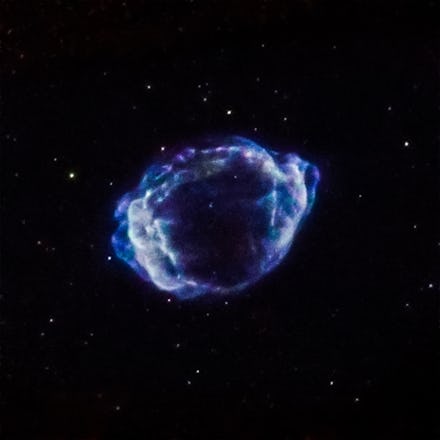This Universe-Shaking Collision Caused the Galaxy's Youngest Supernova

We've finally unraveled the cause of a mysterious cosmic death.
When a star reaches the end of its life and explodes in a supernova, the explosion leaves behind a patch of hot gas and high-energy particles called a supernova remnant. Like a crime scene, scientists can study supernova remnants to figure out what caused the star to die.
The youngest supernova remnant in our galaxy is called G1.9+0.3, and the explosion happened about 110 years ago.
Now scientists finally think they know what caused it.
Based on the radiation patterns in the remnant, astronomers concluded the supernova likely happened when two white dwarf stars merged and exploded.
"We observed that the X-ray and radio brightness increased with time, so the data point strongly to a collision between two white dwarfs as being the trigger for the supernova explosion in G1.9+0.3," study co-author Francesca Childs said in a statement.
G1.9+0.3 is what astronomers call a Type 1a supernova. They're invaluable to cosmology.
"Astronomers use Type Ia supernovas as distance markers across the universe, which helped us discover that its expansion was accelerating," lead author Sayan Chakraborti said in a statement. "If there are any differences in how these supernovas explode and the amount of light they produce, that could have an impact on our understanding of this expansion."
That means if Type Ia supernovas don't all happen the same way, then we may have to find a new way to measure the rate of expansion in the universe. Astronomers are studying supernova remnants in other galaxies to see if they can piece together the cause of more stellar explosions.
h/t Space.com